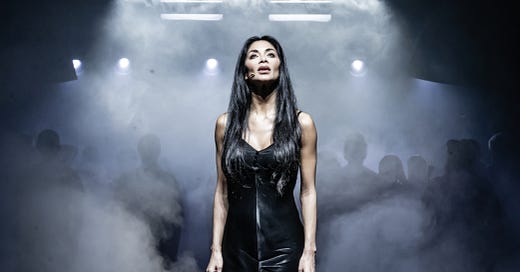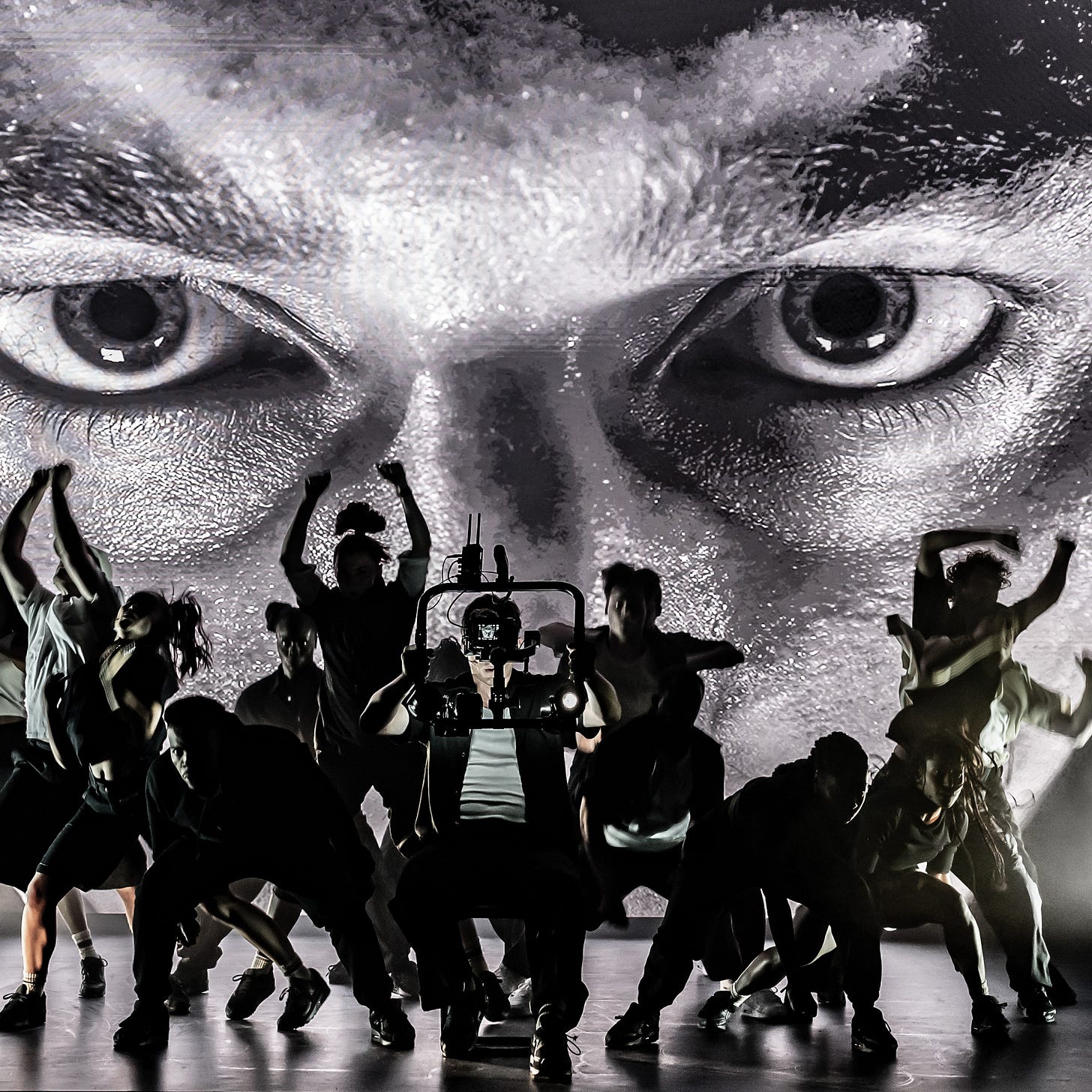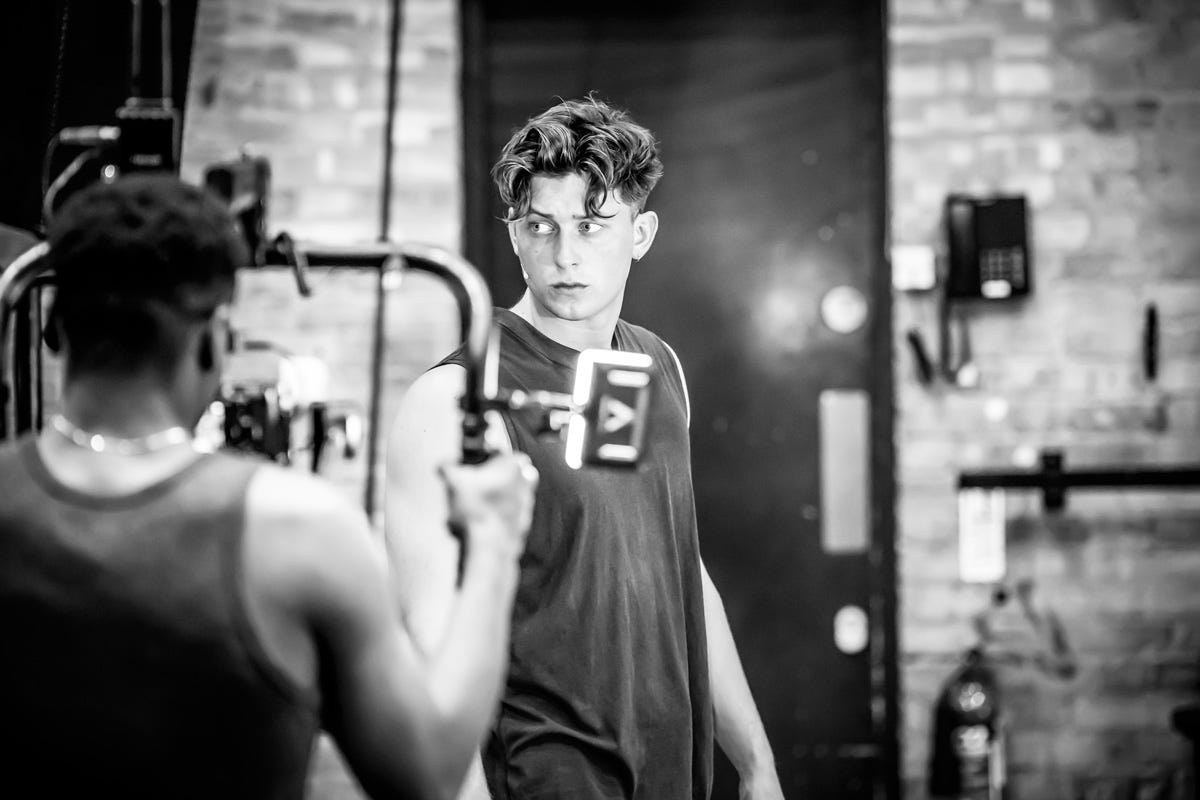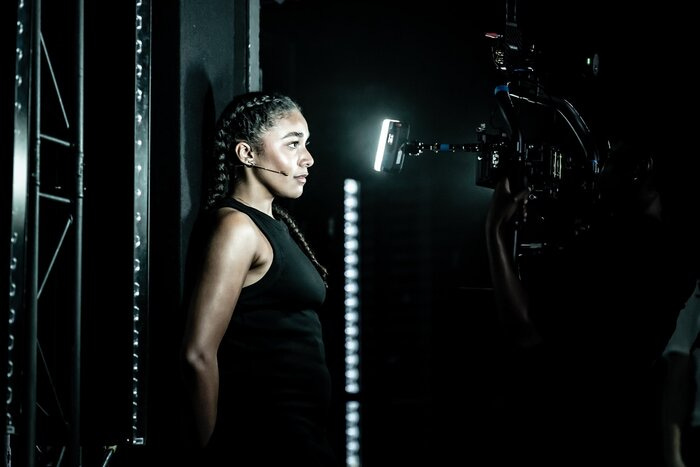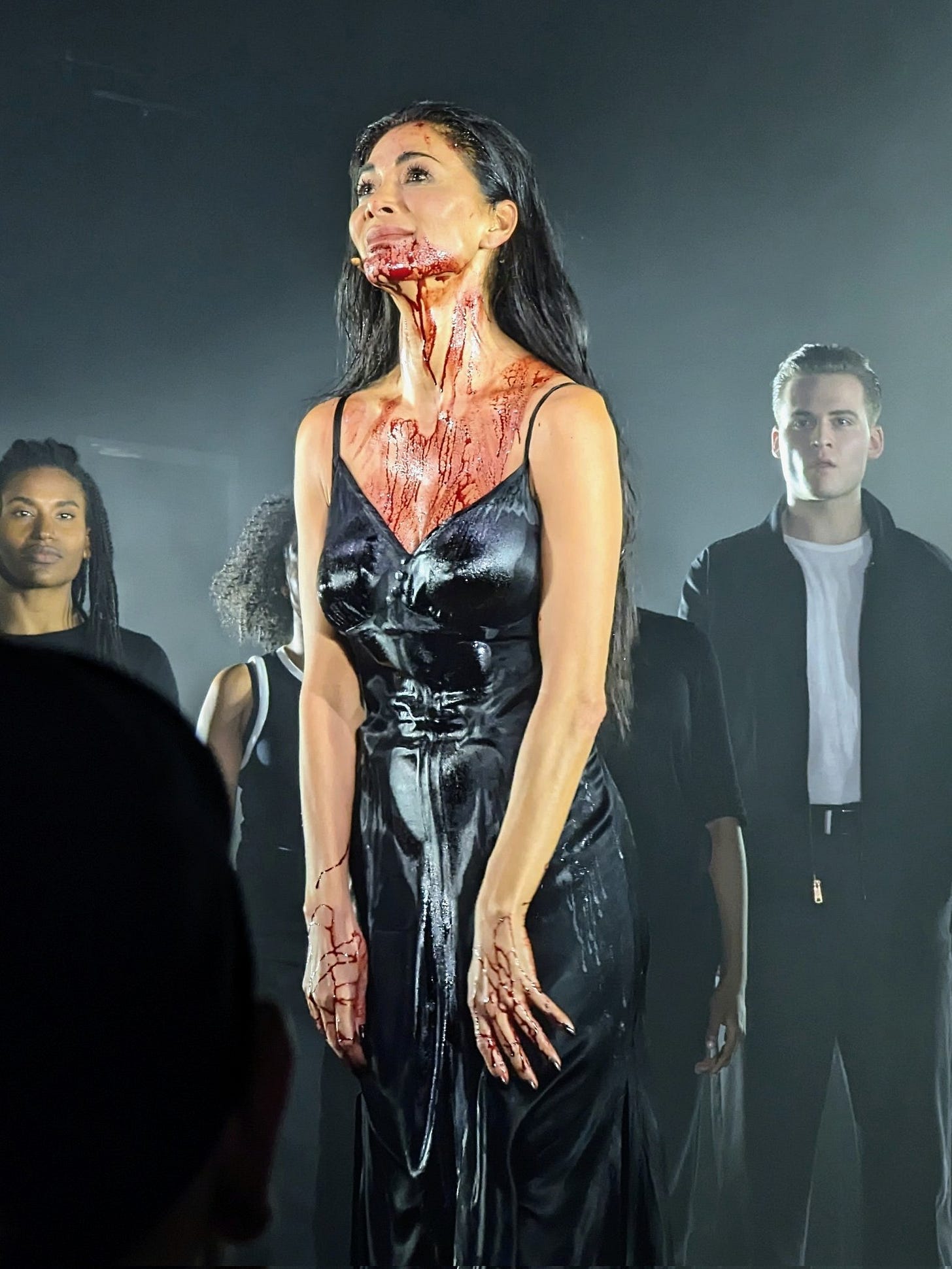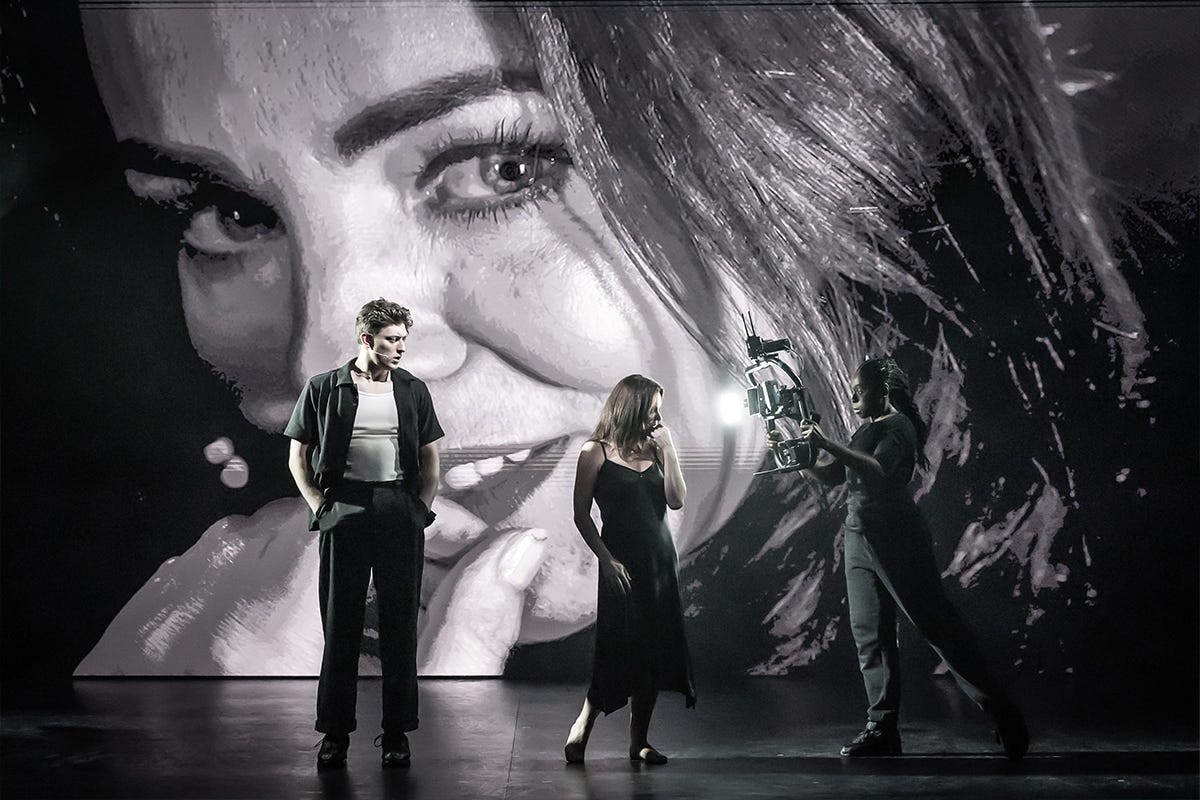Sunset Boulevard: Nicole Scherzinger Is Magnificent In An Obsessively Powerful Show
Jamie Lloyd's Version of Lloyd Webber's 90s mega musical replaces the maximalist mansion with emotion, truth and incredible theatricality.
Thank you for taking the time to read The JasonWard Creative Substack. I hope you enjoy this article and it would be great to welcome you as either a free or paid subscriber. Subscribing would serve two purposes: it supports my work and makes me happy! A paid subscription will get you exclusive content and access to the full archive of over 80 articles, playlists and podcasts. Many Thanks!
Obsession is both a powerful and dangerous emotion. It can be the driving force behind success and stardom or the trigger for damage, destruction and chaos. There is Obsession by Calvin Klein presented as“the sensuality and ardour of passion and romantic obsession.” Then there are obsession based disorders which can tip people into loops of repetitive thoughts, behaviour and fears.
Andrew Lloyd Webber’s Sunset Boulevard is a musical driven by an obsession with stardom. The two leading characters are at opposite ends of the spectrum: actress Norma Desmond used to be recognised by 30 million people and is now forgotten, whereas writer Joe Gillis craves to be recognised by anyone. The collision of their orbits and ambitions is the dynamo powering this show in a creative new production which, in Jamie Lloyd, now has a Director with the vision to reveal its heights rather than someone who who wants to build a self serving monument to pompous grandiosity on the top of Sunset’s brooding book and soaring score.
This Sunset Boulevard has been described by some commentators as stripped back or minimalist. This is only correct if you believe that the visual artifice of mammoth sets, mechanical gimmicks and baroque excess are necessary to emotionally tell a story. Back in the 80s and 90s we wanted more spectacle and Andrew Lloyd Webber became synonymous with shows designed by uber maximalists. If the set didn’t fly, rotate or feature the mechanical complexity of a car production line it signified a lack of ambition or creative vision. This version of Sunset Boulevard dispels that myth and shows us what could have been if ALW had not been creatively led astray by his creative and management teams who could not make the show work at a budget that covered costs and repaid investors.
Watching this production of the show reminds us that the noble Lord LW was once renowned for being cutting edge. Together with Tim Rice he almost invented the sung through rock opera, and took on controversial subjects like politics and the last days of Christ. We should also remember that Cats and Starlight Express were both groundbreaking in their visual spectacle when they opened and their influence is still felt today - Starlight Express was the first show to bring rap to musical theatre!
So while the image of Sunset Boulevard’s previous incarnation was as the last of the British mega-musicals, this new version is visually much more direct with designer Soutra Gilmour ensuring there is nothing to distract from the emotion and plenty to magnify it. Because emotionally this show is maximalist. This design choice is both important and timely because, the truth is that Sunset Boulevard is not a mega musical at all. In fact Frank Rich in his New York Times review of the original 1993 London production berated the fact that Director Trevor Nunn had tried “to stamp the proven (mega production) formulas of Phantom and Les Miz on an intimate tale”
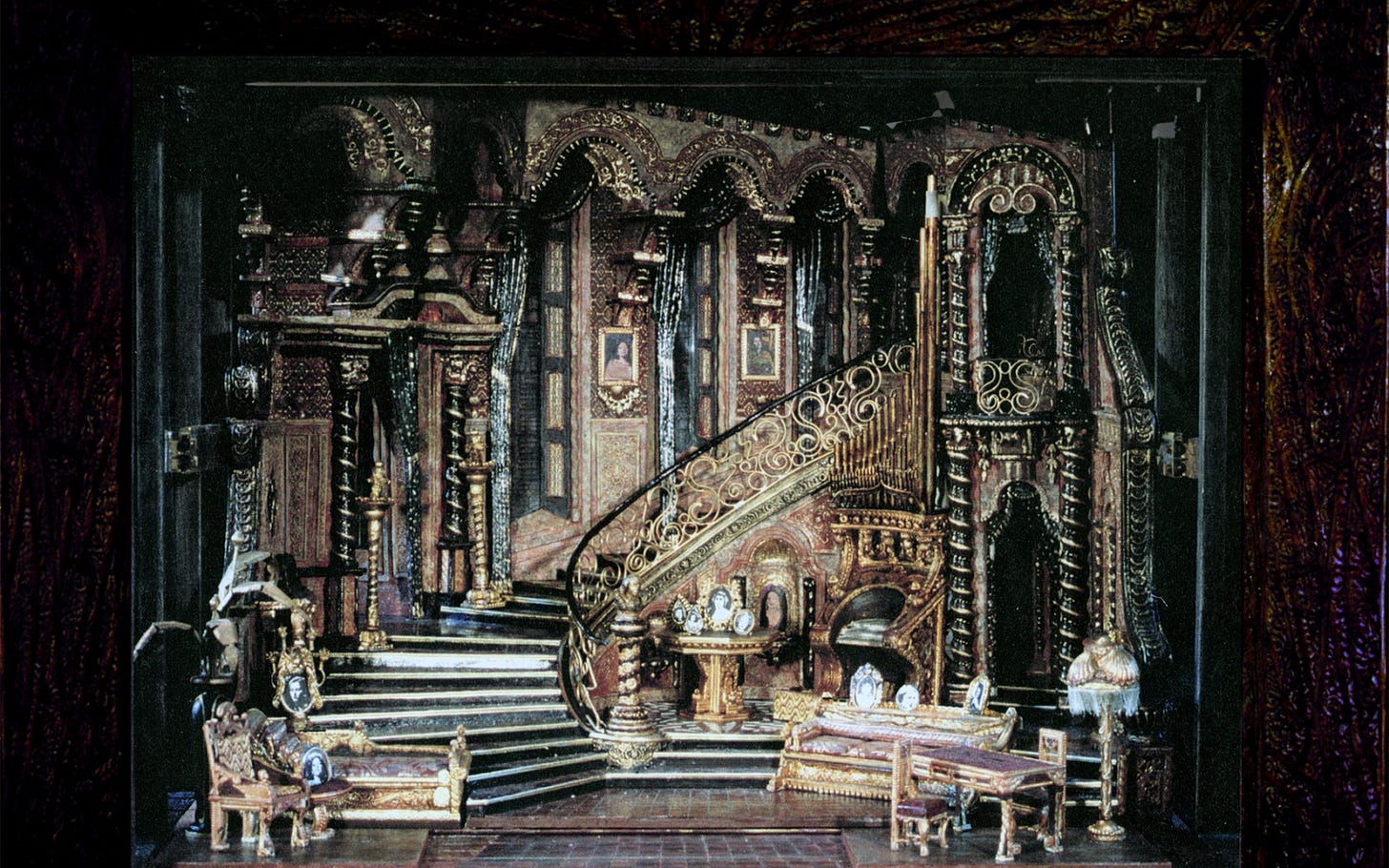
Rich may have had a reputation for being cruel and snide but watching the 2023 production his comment is deeply prescient. Jamie Lloyd’s production allows us to see the truth that this show is not about a cast of thousands and a budget of millions but about 4 people who all express ambition and love in slightly different ways. By stripping away the flying mega mansion, the vintage car and the 5000 costumes Lloyd has allowed the emotions of the piece to fully bloom. And by using a monochrome colour palette paired with moments of close up onstage video projected upstage of the actors, Lloyd is able to massively magnify emotions giving us new ways to (dream?) understand what is happening as we are given an onstage and onscreen setting. This works because it is how we live today - we watch TV while scrolling on our phones, we are on Zoom calls while checking our emails and we pay extra for sports coverage that shows us all the angles of every piece of action. Jamie Lloyd’s Sunset Boulevard shows us all the angles of every piece of action and emotion.
Casting Nicole Scherzinger as forgotten movie star Norma Desmond is not just totally inspired: it is pure theatre. She is completely committed to the role, inhabiting Norma Desmond and imbuing her with a mix of confidence, fear and, that word again, obsession. Scherzinger is physically and emotionally fearless in this performance. She dances Fabian Aloise’s expressive contemporary choreography with the ensemble and she is exposed onstage with just a black slip as costume throughout - and her psychological unravelling is breathtaking.
And let’s also be honest that in the very back our minds is the fact that we know that this is NICOLE SCHERZINGER onstage and this knowledge just adds to the theatricality. But this is not the Nicole Scherzinger show - it IS Nicole Scherzinger ripping away the padding and the protection of celebrity and playing a celebrity who has had the padding and protection of celebrity ripped away. Scherzinger is an artist who can get to places that are too pressurised and out of reach for many actors because how many people have been to the levels of fame that she has achieved?
There are moments when Scherzinger may quickly play a pout to the camera and others when she is stripped emotionally bare in full HD close up, projected onto the giant screen. Her eyes and pores are wide open for all to see, no filter, no photo shop - again nowhere to hide. This is not your Auntie Pam’s Sunset Boulevard!
When Scherzinger steps onto the stage as Norma we know we are in the presence of a star. When she performs With One Look and As If We Never Said Goodbye the show stops. Literally. This is what it looks like when talent and star power collide.
Norma Desmond has been the Greatest Star. She had 30 million fans and With One Look she could break hearts and make a lot of money for movie studios. How could she possibly come to terms with the fickleness of fame and how it has deserted her? Like a long term lover leaving never to be seen again. You wait for the day that they will return and you never stop believing that one day they will. The hope drives you to despair and, in Norma’s case, to madness.
It would be wrong to assume that Sunset Boulevard is a star vehicle for Ms Scherzinger for two reasons: firstly because Jamie Lloyd has made sure that the real star is the show and secondly because he has assembled an incredible cast and creative team alongside Scherzinger and they are the vehicle for the show.
Tom Francis brings energy and machismo to the role of cynical writer Joe Gillis. Francis is a young man with the rare ability to play the world weariness that is overcoming his character without alienating his audience. His presence is almost the yang to Scherzinger’s yin contrasting her character’s instability with his own fixed view of the world but also convincing us with his charisma that Norma would literally throw herself at him sexually.
Tom Francis’ face is movie star beautiful when projected large on the screens and he combines the screen acting skill of stillness with the stage craft of a true leading man. His performance of the title song at the top of act two is one of the most incredible pieces of theatre you will ever experience. The concept for this number is so immense and mind-blowing that a lesser performer would have failed the material. As the interval lights fade the entractre music starts and on the screen we see Francis in his dressing room. He leaves and chats with various other cast members along the way all the while being filmed on steadicam in one long continuous shot. He pops into Scherzinger’s dressing room where she greets him in a turban (!) and we are shown a gun. He greets David Thaxton who plays Norma’s butler Max and is shown looking at a photo of the pussycat dolls - we have gone deep meta! As Francis continues to walk through the backstage area of the theatre we start to wonder if he is in character as Joe when he is not with Norma, or are we seeing an interpretation of movies about movies where there were always actors in costume walking around the backlot or is he actor Tom Francis getting himself ready for his next scene as Joe Gillis.
As the entr’acte music ends, however, Joe does not appear onstage. He keeps on walking, past the back of the stage, up a flight of stairs and out onto the London streets (past a cut out of Lord ALW!) Except now he is in character, he is singing Sunset Boulevard while walking up an alleyway, past a pub and onto The Strand which is one of London’s busiest streets. All this still in the same shot and up on the screen as he turns right and walks towards the theatre, pausing at the poster featuring Norma / Scherzinger - by now we are not sure if we are in the show or in the movie in Norma’s mind. Tom/Joe comes into the theatre foyer, descends several flights of stairs before bursting into the auditorium and charging up to the stage to finish the last couplet of the song. The applause when he enters the room is huge, and continues until the end of the song when Tom is now Joe and stops the show! Tom is sharing the stage with Nicole and Joe is sharing his life with Norma and the star power is rubbing off in both realities. Joe’s descent into his own madness from this point is gradual and subtle and wonderfully played by Francis who is surely now set to be a huge star.
Here’s a taste of how it looks from the street (video from TikTok)
Norma lives in a huge mansion at 10086 Sunset Boulevard where she is attended to by her butler Max who protects her from the outside world and herself. David Thaxton as Max puts up barriers to Joe and feels like a threatening dark presence when we first meet him. We are not sure if Max is a villain, a servant or a hostage taker. Thaxton uses stillness and subtlety to show us the pain Max is feeling, before revealing his own secret and how he shares Norma’s sense of rejection and isolation. By protecting her from the world that has rejected her, Max has to live an alternate reality that affects his own sanity. He is tightly wound and we really only learn why this is when Norma attempts suicide and he saves her life. This self harm is the first indication we get that Norma’s unravelling might have happened before. The blood we see on Norma’s wrists is the red that breaks the onstage monochrome as Norma, trance like and empty, walks to centre stage. We realise that Norma’s mental health issues are more serious, she is not just a faded star who thinks she should be back on top, instead the experience of being rejected by her industry and the public has seriously damaged her. Max knows this and is protecting her from the outside world and her own demons. Max’s service to Norma is one born of a deep love. It is not a romantic love but passionate and obsessive just the same. This is a deep, mature and affecting performance by David Thaxton as Max.
The fourth member of the leading quartet is Betty Schaeffer who is keen to work with Joe on a new movie script and, despite being engaged, falls in love with the writer. Betty is wonderfully played by newcomer Grace Hodgett Young as much more than an ingenue lead. Young’s Betty provides a counterpoint to the madness and enables us, the audience, to take stock of how far Joe, Max and Norma are immersed in their own reality. This is an assured, and strong performance from an exciting new talent!
Throughout the show we see Norma’s younger self, beautifully and movingly performed by Hannah Sun Chamberlain. This dance role speaks to the fact of Norma seeing herself as young (she thinks she should be playing a 16 year old Salome in a movie script she has written). Her whole self has been constructed around an image that lives in a public and private memory. She doesn’t look like that anymore which also speaks to all of us when we see pictures of the stars we idolised when we were young and are astounded at how much they have aged. It also speaks to how we see ourselves. When we look in the mirror we see the same face that we have always had and then we see a photograph and wonder who that old person is second from the right. The realisation that the old person is ourselves saps our confidence because we realise that everyone else sees us that way.
When we see Scherzinger’s face in close up as Norma she is undoubtedly a very beautiful woman. When we see that same face fade into Young Norma’s we realise that while Norma is beautiful she is not young and in a society that obsessively values youth above all, the loss of youth equates with loss of power, attractiveness and even relevancy. As it was in 1949 so it is today!
This Sunset Boulevard is a potent mix. Rejection becomes obsession become madness. Star meets young buck creative who could help her become a star again and they fall into an obsessive relationship . Show about movies uses movies to show what it’s about.
Norma Desmond believes in astrology and for this production the stars have aligned. Jamie Lloyd said that he dreamt about doing Sunset Boulevard with Nicole Scherzinger and with the help of an incredible creative team, and a wonderful cast he has found and beautifully exposed the truth in this show. And isn’t that what theatre should be doing?
Jamie Lloyd has already won Best Director for SunsetBoulevard at the Evening Standard Awards and Nicole Scherzinger has won Best Performance in a Musical.
Sunset Boulevard plays at The Savoy Theatre, London until January 6th. The role of Norma Desmond is played on Mondays by the wonderful Rachel Tucker. For more information and to book tickets click here:

